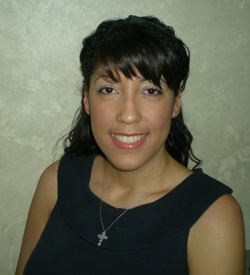What is your Lymphatic System and how does it work?
Your lymphatic system is one of the most interesting and important systems in the body. It is comprised of approximately 600 lymph nodes, lymph tissue, vessels, your spleen, thymus, tonsils and adenoids. (And scientists are still learning new things about this system: just a few years ago it was discovered that we have lymph vessels in the brain. We even have these tiny vessels all around our eyes!) The majority of the nodes are located in our upper body, specifically the abdominal, chest and neck areas which is just one reason why so many issues with inflammation and edema tend to arise in these places.
Unlike your circulatory system which has the heart to pump the blood through your veins, lymph fluid is pumped through the vessels only through either muscle contractions throughout the day or through manual stimulation and stretching (Manual Lymph Drainage). The contractions of the muscle slowly push the fluid up your body and to the major grouping areas of lymph nodes: inguinal (groin), axilla (armpit) and cervical (neck). Many people confuse these areas with the ducts which is where the lymph is ultimately flushed into. You have two ducts located in your chest area: the right duct which flushes out all the lymph for the upper right quadrant of your body which includes your right arm, right side of your neck and head and upper right chest area. The left duct, or thoracic duct, is responsible for flushing out the lymph for the entire rest of your body!
Your belly button–or cisterna chyli—brings up lymph fluid from the abdominal area directly up into the thoracic duct. Lymph fluid is comprised of fats, cellular debris, white blood cells, proteins and water. Its circulation is an integral part of our constant healing process. Even now as you read this article, your body is an incredible machine that is repairing and regenerating. It is also important to remember that your kidneys filter out these toxins, so stay hydrated!
How and why is Manual Lymph Drainage so important?
Unfortunately, our society as a whole is much sedentary and without that lack of muscle movement and contraction, the lymph stays stagnant and gets backed up. Changes in nutrition, with unhealthy fatty foods being added to our diets makes the lymph consistency thicker and harder to move as does lack of proper hydration. Remember, lymph is also comprised of water. All of these things combined lead to stagnant lymph, which leads to inflammation, edema and, ultimately, illness.
A Manual Lymph Drainage therapist will slowly stretch and work the skin and thereby move the lymph fluid in the direction of the main groupings of nodes and then flush everything out through the ducts. It is a very delicate and slow stroke as your superficial lymph vessels are less than 1mm below the skin’s surface!
Where does Thermography fit in?
Thermography will show areas of heat which denote areas of inflammation. As a Certified Manual Lymph Drainage therapist, I know that areas of inflammation generally mean areas of stagnant lymph which need to be addressed.
Tips:
- Make exercise a part of your daily habits. Whether it’s using a rebounder, power walking jumping rope or doing jumping jacks. (*Speak to your medical professional before beginning any new physical regimen.)
- Remember that hydration plays an important role in all our body systems and aids our bodily functions including flushing out the lymph system.
- If you’re dry brushing, please remember to brush very, very gently. The goal is just a gentle stretching of the skin, not an exfoliation. ?
- For us women: if you’re wearing a bra, especially one with underwire, please be kind to yourself and lift the bra away from your trunk a few times a day and give a gentle rub to your bra band area. We forget how constricting our bras are and how superficial the lymph system can be.
About the Author: Angela Roberts, LMT, CMLDt
 A Licensed Massage Therapist (NJ License # 18KT00493800), Angela specializes in medical massage and is able to aid in relief of pain stemming from ailments such as carpal tunnel syndrome, sciatica, herniated discs, etc. using techniques and treatments which address the source of the dysfunction and not just areas of the discomfort. As a Certified Manual Lymph Drainage therapist, having been trained and certified in using Dr. Vodder’s style of Manual Lymph Drainage, she focuses on aiding in the reduction of inflammation and edema.
A Licensed Massage Therapist (NJ License # 18KT00493800), Angela specializes in medical massage and is able to aid in relief of pain stemming from ailments such as carpal tunnel syndrome, sciatica, herniated discs, etc. using techniques and treatments which address the source of the dysfunction and not just areas of the discomfort. As a Certified Manual Lymph Drainage therapist, having been trained and certified in using Dr. Vodder’s style of Manual Lymph Drainage, she focuses on aiding in the reduction of inflammation and edema.
Being especially interested in women’s health and healing, she is also a Certified Fertility Massage Specialist and has additional certifications in Mastectomy Massage and Healthy Breast Massage.
Angela has a passion for teaching and helping to empower others to take charge of their own health and make informed decisions regarding their healthcare. In her spare time, she can alternately be found with a book in her hands or watching re-runs of Psych or Stranger Things. She loves taking classes on new massage and bodywork techniques that’s she can bring into her practice to aid in the wellbeing and health of her clients!
Angela Roberts, LMT, CMLDt
Wholistic Wellness Associates, LLC
www.holisticwellnessnj.com
(908) 591-6991

